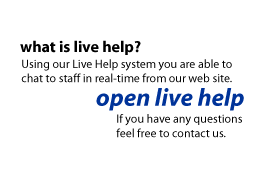Enomaly's web site and application consulting services bring together an extremely rich set of skills and experience-tuned perspectives. Our real value is consistently demonstrated through our ability to carefully listen to and understand the needs of our clients and to translate those requirements into a solution that fits their budget and meets their present and future operational needs.
Iterative and Incremental development methodology overview
The idea of iterative enhancement is to develop / implement an open source software system incrementally, allowing the developer to take advantage of what was being learned during the development of earlier, incremental, deliverable versions of the system. Learning comes from both the development and use of the system, where possible. Key steps in the process were to start with a simple implementation of a subset of the software requirements and iteratively enhance the evolving sequence of versions until the full system is implemented. At each iteration, design modifications are made along with addition new functional capabilities.
The Procedure itself consists of the Initialization step, the Iteration step, and the Project Control List. The initialization step creates a base version of the system. The goal for this initial implementation is to create a product to which the user can react. It should offer a sampling of the key aspects of the problem and provide a solution that is simple enough to understand and implement easily. To guide the iteration process, a project control list is created that contains a record of all tasks that need to be performed. It includes such items as new features to be implemented and areas of redesign of the exiting solution. The control list is constantly being revised as a result of the analysis phase.
The iteration step involves the redesign and implementation of a task from project control list, and the analysis of the current version of the system. The goal for the design and implementation of any iteration is to be simple, straightforward, and modular, supporting redesign at that stage or as a task added to the project control list. The code represents the major source of documentation of the system. The analysis of an iteration is based upon user feedback and the program analysis facilities available. It involves analysis of the structure, modularity, usability, reliability, efficiency, and achievement of goals. The project control list is modified in light of the analysis results. [wikipedia]
Guidelines that drive the implementation and analysis include:
- Any difficulty in design, coding and testing a modification should signal the need for redesign or re-coding.
- Modifications should fit easily into isolated and easy-to-find- modules. If they do not, some redesign is needed.
- Modifications to tables should be especially easy to make. If any table modification is not quickly and easily done, redesign is indicated.
- Modifications should become easier to make as the iterations progress. If they are not, there is a basic problem such as a design flaw or a proliferation of patches.
- Patches should normally be allowed to exist for only one or two iterations.
- Patches may be necessary to avoid redesigning during an implementation phase.
- The existing implementation should be analyzed frequently to determine how well it measures up to project goals.
- Program analysis facilities should be used whenever available to aid in the analysis of partial implementations
User reaction should be solicited and analyzed for indications of deficiencies in the current implementation.
Enomaly uses an adapted version of Six Sigma, a quality management program
as well as the Iterative and Incremental development methodology.
|
|

